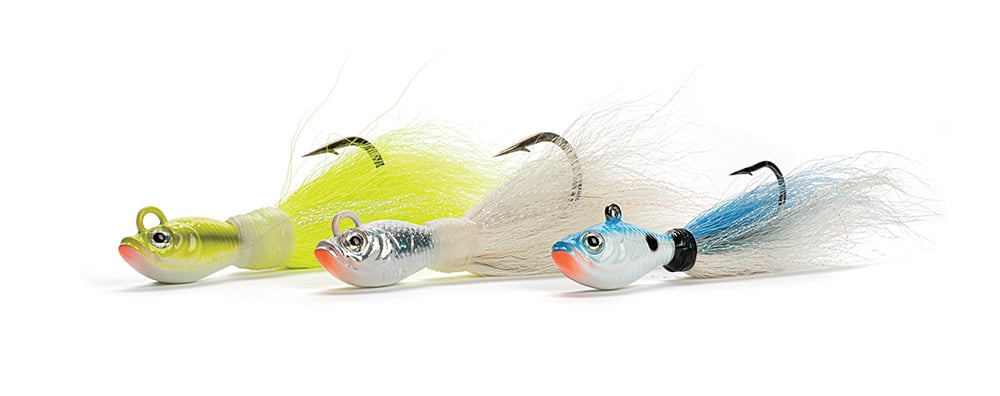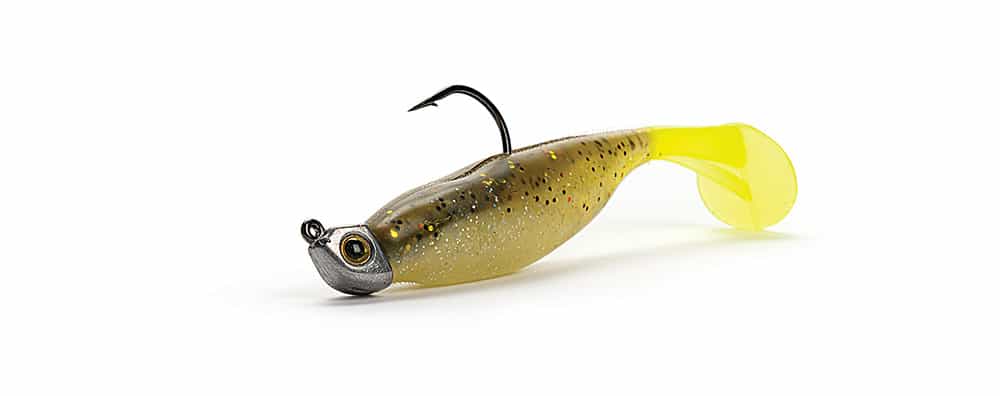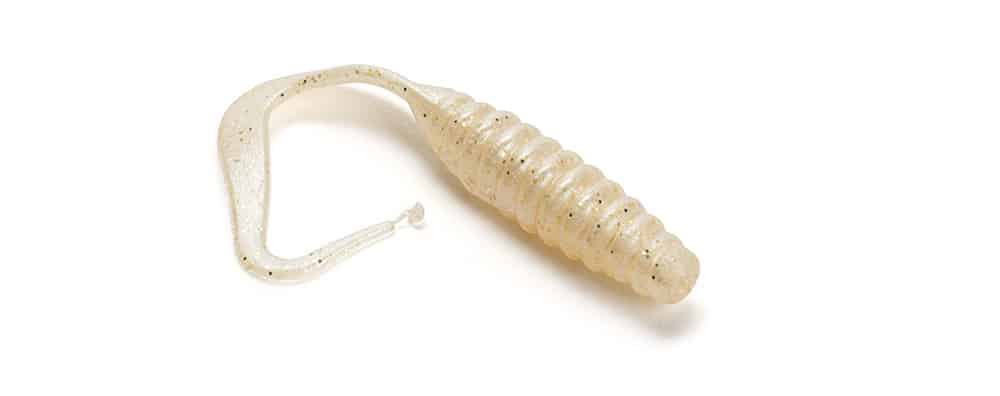Striped bass jigs encompass a broad category of artificial lures that lend themselves to an equally wide variety of applications. Regardless of type, their appeal is to the striped bass predatory instincts by emulating forage fish.
Bucktail jigs, such as Spro bucktails, Andrus Lures Smiling Bill or any variety of generic bucktail, in any color so long as it’s white, are the classic striper jigs, time tested and proven over decades. And they still work, but the way they are fished, which is up to the angler and their particular skill level, can make or break your success in catching striped bass.
Bucktail Jig for Stripers

Swimming steadily and laconically just under the surface, bucktail jigs for stripes can be fished at mid-level in the water, or bumped along the bottom, the weight of the head and bushiness of the bucktail determines sink rate and how a particular jig adapts to different presentations.
Soft Plastic Jigs for Striped Bass

Still an important component of any tackle box, bucktails have been largely supplanted in recent years by soft plastic jigs. Soft plastic striper jigs come in a variety of configurations: twitch baits, curly tails, paddle tails or swim baits (which most realistically resemble baitfish) can be fished from the surface to the mid-water column, or deep along the bottom.

Various configurations effectively imitate striped bass bait such as herring, sand eels and bunker (menhaden) among other forage species.
The addition of a lead head, or built-in weight on some models, allows them to plumb the depths. Their versatility is exceptional for striped bass fishing, and in most cases, the lure itself has been designed to provide a specific action, so the learning curve in effectively fishing them is short to nonexistent.









